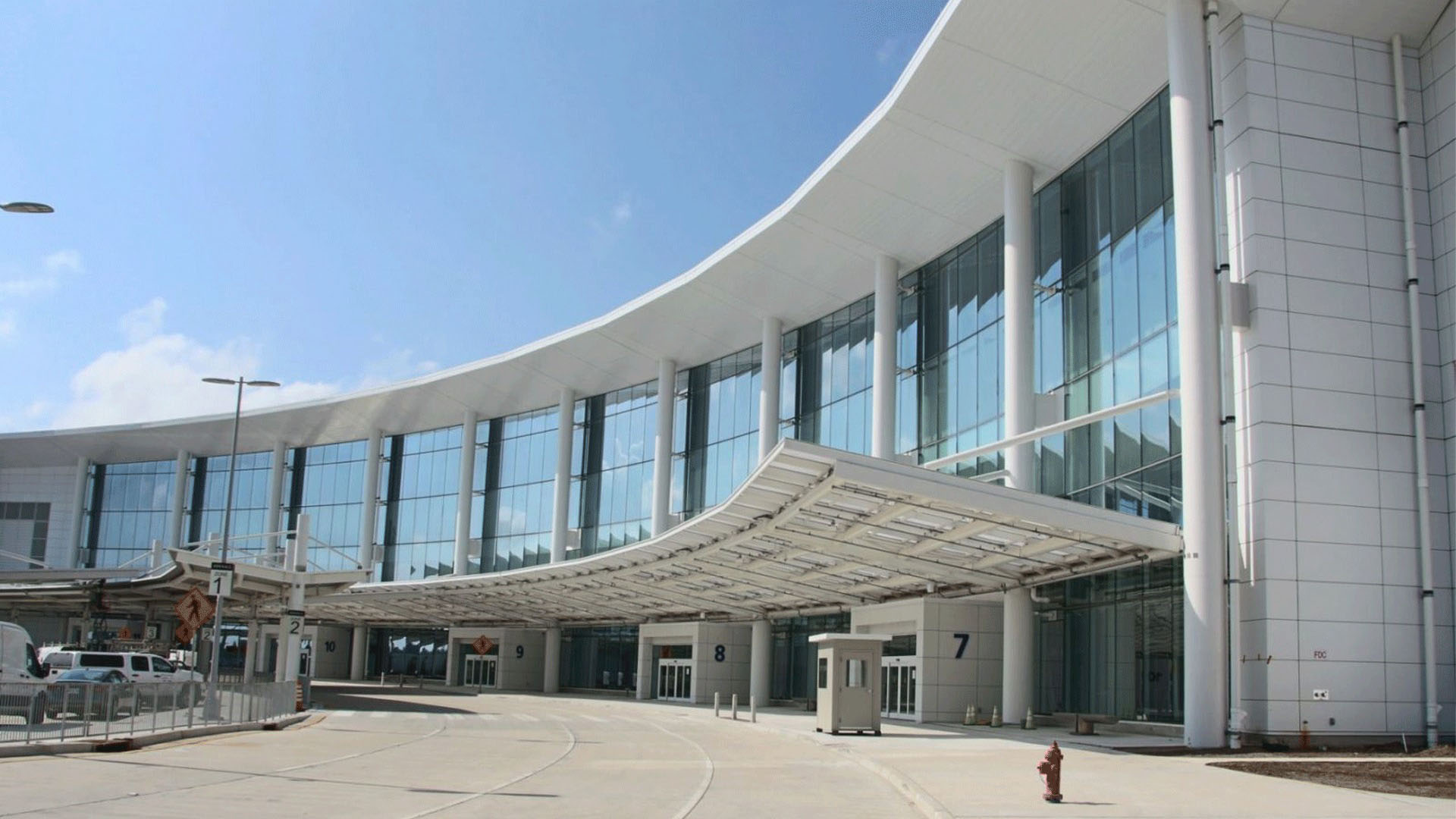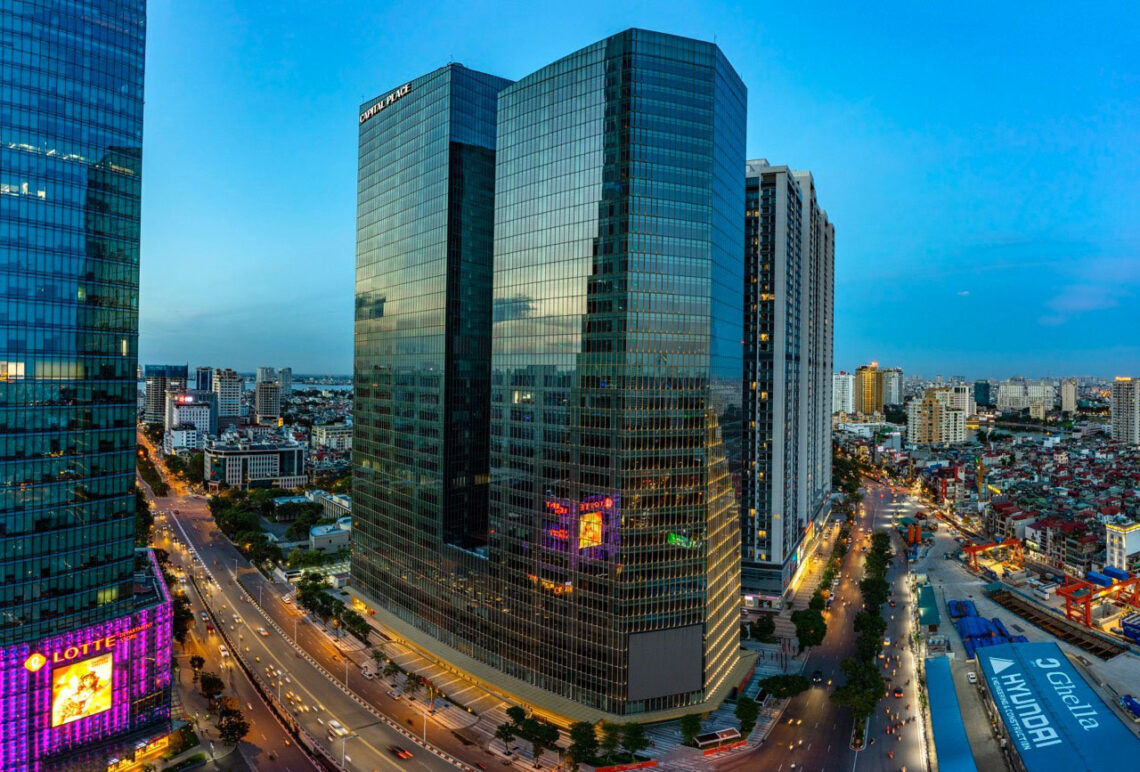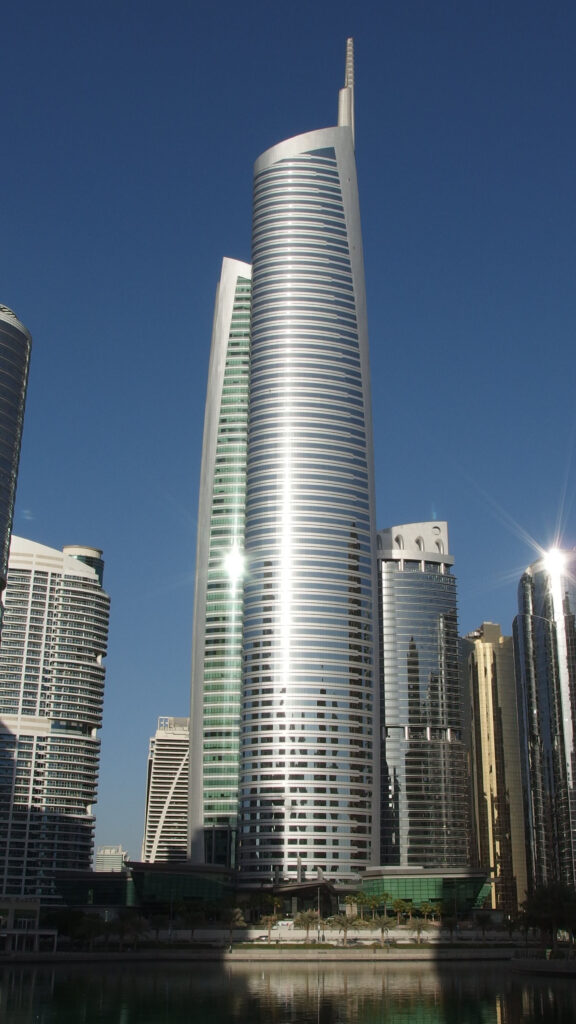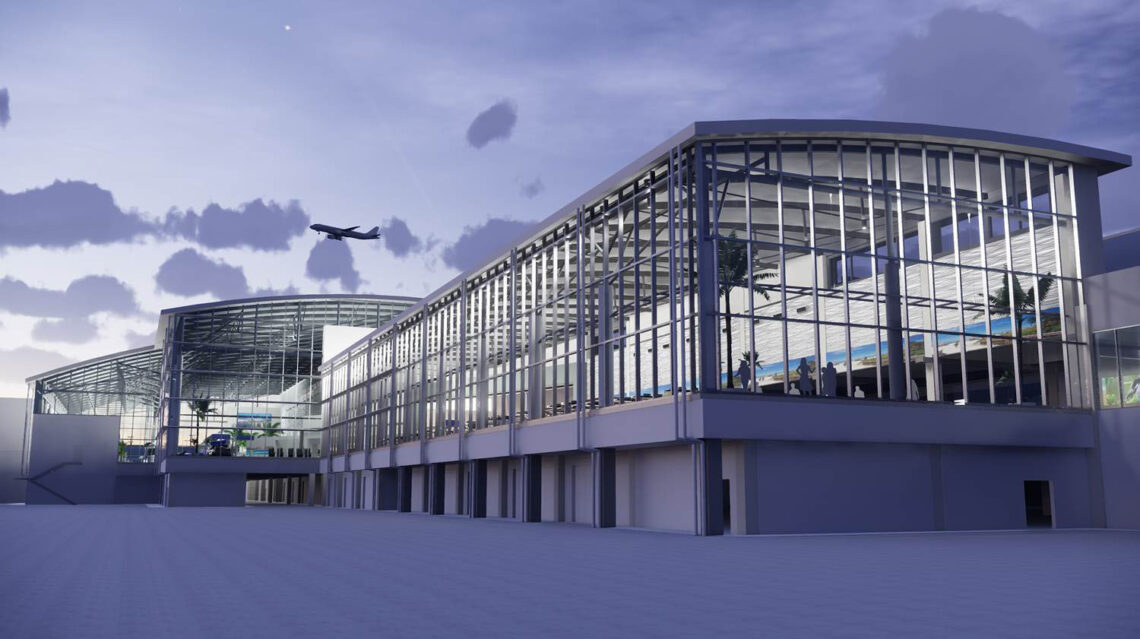Atkins Architecture is a leading multinational consultancy firm, founded in 1938 and headquartered in London, with over 18,000 employees and 300 offices worldwide. It offers integrated services in architecture, engineering, design, project management, and consulting across transportation, infrastructure, energy, and urban planning sectors. Atkins is known for landmark projects like the Bahrain World Trade Center, Doha Metro Red Line, and London 2012 Olympics Infrastructure, and is a leader in sustainable design. The history of Atkins dates back to 1938 when Sir William Atkins founded it in the UK. The firm went public in 1996 and grew through acquisitions, establishing itself as a leading design, engineering, and project management consultancy. Some of its iconic projects include the M6 Toll Road, Burj Al Arab Hotel, and the Guangzhou-Shenzhen-Hong Kong Express Rail Link. In 2016, Canadian group SNC-Lavalin acquired Atkins, creating a global professional services and project management company with over 50,000 employees. Atkins has a significant global presence with offices across the Americas, Europe, the Middle East, Africa, and Asia Pacific. Its headquarters is in Epsom, UK, with major offices in cities like Birmingham, Atlanta, Dubai, and Shanghai. Atkins focuses on building sustainable and complex projects in transportation, infrastructure, architecture, energy, water, and healthcare, employing diverse specialists and leveraging multidisciplinary expertise to deliver projects from conception to completion.
What is Atkins Architecture?
Atkins is one of the world’s leading and largest multidisciplinary consultancy firms offering integrated architecture, engineering, design, project management, and consulting services. Founded in 1938 and headquartered in London, Atkins has over 18,000 employees across 300 offices in over 150 countries. Atkins provides consultancy services to various public and private sector clients across industries like transportation, infrastructure, energy, water, environment, urban planning and design, and architecture. With capabilities spanning the entire asset lifecycle, Atkins provides end-to-end services from feasibility studies, advisory, planning, engineering design, program management, construction supervision, commissioning and handover, operations, and maintenance. Atkins’ core services include architecture, building design, civil engineering, transport planning, infrastructure design, environmental consulting, landscape architecture, urban design and planning, asset management, mechanical, electrical, and structural engineering.

Some of Atkins’ landmark projects include the Bahrain World Trade Center, the Anara Tower in Dubai, the Vincent Thomas Bridge seismic retrofit in LA, the M6 Toll road in the UK, the Dubai Metro Red Lines in UAE, the Guangzhou South Railway Station in China, the Doha Convention Center Tower, the Midfield Terminal Complex at the Abu Dhabi Airport, the London 2012 Olympics Infrastructure, the Dubai Tram Network, the Kingdom Tower Jeddah, and many more. With over 75 years of experience delivering complex multidisciplinary projects, Atkins has earned many awards and accolades, including the Queen’s Award for Enterprise in International Trade 2016. Atkins is also considered an industry leader in sustainable design. In 2016, Atkins’ parent company, SNC-Lavalin, acquired WS Atkins plc in an all-share transaction, creating a global, fully integrated professional services and project management company.
What is the history of Atkins?
Atkins was founded in 1938 by Sir William Atkins in the UK as a small civil and structural engineering practice. Over the next few decades, Atkins expanded to provide multidisciplinary design, engineering, and project management services across transportation, infrastructure, energy, architecture, and urban planning. In 1996, Atkins went public on the London Stock Exchange. Through further acquisitions and organic growth over the 1990s and 2000s, Atkins cemented itself as one of the world’s leading design, engineering, and project management consultancies. By 2008, Atkins had over 18,000 employees globally. In 2016, Atkins was acquired by Canadian engineering and construction group SNC-Lavalin in an all-share deal valuing Atkins at £2.1 billion. This created a fully integrated professional services and project management company of over 50,000 employees worldwide. Atkins now operates as the Atkins division of SNC-Lavalin. Today, Atkins has more than 18,000 workers across 300 offices in over 150 countries. Atkins provides end-to-end consultancy, including feasibility assessments, surveying, design, and engineering across various disciplines like civil, structural, mechanical, electrical, architecture, and master planning.
Where is Atkins located?
Atkins is located in Epsom, UK, and it maintains a strong presence in various UK cities such as Birmingham, Bristol, Cardiff, and London, among others. Atkins extends its reach to Belgium, France, Germany, Italy, Spain, and more in Europe. In North America, the firm operates in several U.S. cities, including Atlanta, Chicago, and New York City, as well as Canadian cities like Montreal and Toronto. Atkins has a robust presence in the Middle East, with offices in Bahrain, Egypt, Kuwait, Qatar, Saudi Arabia, and the UAE. The Asia Pacific region covers significant countries like Australia, China, India, Japan, and Malaysia, with key offices in cities such as Brisbane, Shanghai, and Bangalore. Atkins is also active in Africa, with offices in Algeria, Ghana, Kenya, Nigeria, and South Africa. Lastly, in Latin America, Atkins operates in countries like Brazil, Chile, Colombia, and Peru, with offices in major cities such as Bogota, Rio de Janeiro, and Santiago.
What does Atkins focus on building?
Atkins focuses on complex and sustainable building projects across various sectors: transportation, infrastructure, architecture, energy, water, environment, urban planning, healthcare, and advanced manufacturing. The core design and engineering focus of Atkins spans across the built environment spectrum, including transportation, where they design airports, aviation infrastructure, roads, highways, bridges, and rail & transit systems like metro and light rail, with notable projects like the London Crossrail and the Doha Metro Red Line. In infrastructure, Atkins’ expertise covers tunnels, dams, water treatment plants, power plants, pipelines, and maritime projects such as ports and harbors, with significant contributions to the infrastructure for the London 2012 Olympics. Their architectural projects encompass commercial buildings, residential complexes, hotels, retail spaces, mixed-use complexes, sporting venues, and innovative modular constructions using technologies like 3D printing, with the Bahrain World Trade Center and the Jeddah Kingdom Tower as notable examples. Atkins excels in urban planning and design, mastering city master planning, urban design, landscape architecture, sustainable community planning, and transit-oriented developments, like the Halim TOD in Jakarta. Atkins has designed hospitals, medical centers, labs, pharmaceutical facilities, and R&D centers in the healthcare sector, including the proton beam therapy center at University College London Hospital.

Who is the owner of Atkins?
SNC-Lavalin Group Inc., a Canadian company based in Montreal, is the owner of Atkins. In 2017, SNC-Lavalin acquired Atkins in a £2.1 billion deal. The strategic acquisition significantly boosted SNC-Lavalin’s global capabilities and presence in the infrastructure sector. Atkins is an international design, engineering, and project management consultancy founded in the UK. After going public in 1996, Atkins grew into one of the world’s leading multidisciplinary consultancies through mergers and acquisitions. The purchase of Atkins expanded SNC-Lavalin’s expertise in infrastructure and its client base and ability to pursue large-scale public-private partnership projects globally. Today, Atkins continues to operate under its established brand name as an integrated part of SNC-Lavalin. Atkins maintains its headquarters in Epsom, UK, and its multidisciplinary capabilities across sectors like buildings, transportation, defense, energy, and city planning. The acquisition has allowed Atkins to leverage SNC-Lavalin’s global footprint while retaining its identity.
Who is the CEO of Atkins?
Graham Allan has served as the CEO of Atkins since January 2020. He oversees all global operations of London’s multinational design, engineering, and project management consultancy. Atkins employs over 18,000 staff across 50 countries worldwide. Before becoming CEO, Allan held several senior leadership roles within Atkins and its parent company, SNC-Lavalin, over the past 15 years. He joined Atkins in 2005 and progressed through various director positions in the UK and Middle East, gaining extensive experience managing complex infrastructure projects across multiple sectors. In 2015, Allan was appointed as Managing Director of Atkins’ Middle East operations. In this role, he was responsible for the company’s business across 12 regional countries. He helped drive significant growth and led major projects for clients like ExxonMobil and the Abu Dhabi National Oil Company.
Allan then took on the position of President of Global Key Clients and Markets for SNC-Lavalin in 2017. Based in Montreal, he directed the company’s relationships with key global clients and oversaw business development strategies. When Allan assumed the CEO role at Atkins in 2020, he brought considerable expertise in project delivery, business management, and developing long-term client partnerships. Since becoming CEO, he has focused on positioning Atkins as a leader in sustainable infrastructure and advancing its digital capabilities. Under Allan’s leadership, Atkins has also continued to win major projects worldwide while expanding its presence in growth sectors such as smart cities, digital infrastructure, and renewable energy.
What is the mission of Atkins?
Atkins’ mission is to apply its deep technical expertise and innovation across various disciplines like engineering, design, architecture, planning, project delivery, and asset operations to deliver projects focused on quality, safety, reliability, and environmental sustainability. At the core of Atkins’ mission is a commitment to enable the transition to a net zero carbon economy while enhancing the prosperity, health, safety, and quality of life of the communities it serves. Whether it’s sustainable master planning of cities, designing net zero buildings, integrating renewable energy, or enabling intelligent mobility networks, Atkins aims to create people-centric solutions focused on wellbeing, resilience, and global sustainability goals like climate change mitigation.
What are the most famous projects of Atkins?




Listed below are Atkins’s famous projects:
- Burj Al Arab Hotel in Dubai: As one of the most recognizable buildings in the world, the “sail-shaped” Burj Al Arab luxury hotel exemplifies Atkins’ innovative architecture and engineering capabilities. Atkins designed the hotel’s exoskeleton steel structure wrapped around a reinforced concrete core, enabling the distinctive curved form. The team also engineered the system to withstand high winds and seismic activity.
- Louis Armstrong New Orleans International Airport: The Louis Armstrong New Orleans International Airport is one of the most famous projects of Atkins, was designed and planned by a joint venture called the Crescent City Aviation Team, consisting of global architecture firms Atkins and LEO A DALY. The terminal features an innovative and functional layout reflecting the culture and geography of New Orleans. It has three concourses, numerous concessions, and increased capacity to accommodate the airport’s explosive growth. The project involved replacing the outdated 1959 terminal over seven years of planning and design.
- Southwest Florida International Airport Terminal: Atkins is the lead architect and engineer for the major expansion and modernization of the Southwest Florida International Airport terminal in Fort Myers, one of the most famous projects. The $332 million (€305 million, £248 million) project will expand the terminal from 16 to 27 gates. Atkins is responsible for all architectural and engineering design, improving passenger experience, enhancing airport operations, and providing sustainable and resilient infrastructure.
- The Almas Tower: The Almas Tower, standing at 1,180 feet (359 meters), was the tallest building in Dubai and one of Atkins’ most famous projects until it was surpassed by the Burj Khalifa in 2009. It is the centerpiece of the Jumeirah Lakes development, a significant regional project. The distinctive projecting facets of the tower’s two-story steel podium were inspired by the cut of a diamond.
- The Dubai Metro: The Dubai Metro project is one of the most famous projects of Atkins, which started designing in April 2006. Atkins provided full, multidisciplinary, detailed design for all infrastructure for the Red Line and the Green Line. This included 35 overground stations, 10 underground stations, three depots, 38.5 miles (62 kilometers) of viaducts, 8.1 miles (13 kilometers) of bored and cut & cover tunnels, 3.1 miles (5 kilometers) of footbridges, and 3 car parks providing 12,000 spaces.
- Capital Place in Hanoi: Capital Place in Hanoi, Vietnam, is one of Atkins’ most distinguished projects, showcasing its expertise in integrating cultural symbolism with modern architectural design. This project is a 37-floor office building. It is a LEED Gold-certified development, reflecting Atkins’ commitment to sustainability and environmental responsibility. The design of Capital Place is inspired by the image of a dancing dragon, a powerful symbol in Vietnamese culture.
Who are the most important clients of Atkins?
Listed below are the most important clients in the corporation of Atkins:
- Sky: Sky is a key client cooperation of Atkins Architecture. Atkins has worked on various projects designing and building broadcast studios, office spaces, call centers, and technical facilities across Britain to support Sky’s operations. Specific projects may have included Sky’s Osterley, Chilworth, and Leeds campuses, allowing the architecture firm to craft dynamic yet functional environments for Sky’s creative teams and vital behind-the-scenes work.
- UK Foreign, Commonwealth & Development Office: The UK Foreign, Commonwealth & Development Office is an important client with 60 international offices of Atkins. Atkins Architecture’s global reach and expertise in sustainable design make it a go-to choice for the FCDO’s architectural needs. Projects may range from small renovations of historic diplomatic buildings to ground-up designs of modern, technology-integrated consulates and embassies that showcase innovation while respecting local cultures.
- UK Ministry of Defence: Atkins works extensively with the UK Ministry of Defence as a trusted partner and important client of Atkins for delivering defense infrastructure projects across Britain. Atkins helps design and construct military bases, training academies, research facilities, and headquarters to serve the UK armed forces. The firm has experience working on sensitive defense sites and restrictions while incorporating the latest innovations like simulation technology and sustainable design.
- Amazon: Amazon is one of Atkins’s most important clients. It has massively grown its e-commerce operations and Web Services cloud platform globally. Atkins is well-positioned to design Amazon distribution hubs, sort centers, offices, and data centers across Europe. Projects focus on flexibility, advanced automation integration, and environmental responsibility – allowing Amazon to evolve sites rapidly in line with its business needs.
- Berkeley Homes: Berkeley Homes is one of the most important clients of Atkins, developing large residential communities across London and the South East. Atkins Architecture provides a range of architectural design, planning, and sustainability consulting services for Berkeley’s projects. This may involve initial site master planning, designing homes and amenities focused on placemaking and future community building, and providing environmental assessments to help new developments achieve sustainability targets.
What is the address of AECOM?
Atkins’ headquarters is at Woodcote Grove, Ashley Road, Epsom, Surrey, KT18 5BW, United Kingdom. This address in Epsom serves as the company’s global operations’ main office and head office. Atkins is a leading design, engineering, and project management consultancy with over 18,000 employees across the Americas, Europe, the Middle East, Africa, and Asia Pacific. The Epsom head office coordinates and oversees Atkins’ activities across its network of over 300 offices worldwide. Atkins’ executive leadership team, including CEO Uwe Krueger, drives the company’s business strategy and operations globally from this location. In addition to housing Atkins’ corporate leadership and administrative functions, the Epsom headquarters also serves as an operational center, providing engineering, design, and project management services for UK and European clients. The office employs over 1,200 people, including various technical experts and consultants across the company’s service offerings.
What is the contact phone number of Atkins?
For contacting Atkins, their global headquarters in Epsom, UK, can be reached at +44 1372 726140. In North America, the contact number is 1-800-6-ATKINS. Local offices within their extensive network likely have individual phone numbers for direct contact. For email inquiries, there is a general contact form available on their website at www.atkinsglobal.com/en-gb/contact-us. Regarding physical addresses, the global headquarters of Atkins is located at Woodcote Grove, Ashley Road, Epsom, KT18 5BW, United Kingdom. The North American office can be found at 4030 W Boy Scout Blvd, Tampa, FL 33607, United States.
How to apply to work for Atkins?
Here are the steps on how to apply for Atkins:
- Contact Information: Atkins has a careers website at https://careers.snclavalin.com/atkins/. where you can find information on open positions and submit your application, you can contact Atkins directly through their website with any questions or concerns.
- Finding Open Positions: To find open positions at Atkins. You can search for jobs by location, job type, and keyword. You can also set up job alerts to receive notifications when new positions become available. The organization provides diverse projects, from large-scale developments to challenging neighborhood initiatives, offering employees the chance to contribute to impactful work.
- Submitting an Application: Complete an online application form to apply for a job at Atkins. This form can be found on their careers website. Be sure to tailor your application to the specific role you are applying for. The application form will require your basic personal information, education, work experience, and a cover letter.
- Interview Process: If your application is shortlisted, you will be invited to complete online aptitude tests in numerical reasoning, verbal reasoning, and situational judgment. If you pass the aptitude tests, the next stage is a video interview. During this interview, you will be asked competency-based and technical questions. Prepare answers demonstrating your relevant skills and knowledge. For some roles, there may be a technical interview assessing your degree, subject knowledge, and technical capabilities needed for the position.
What style of architecture does Atkins represent?
Atkins does not have one signature style; their body of work reflects certain common threads – namely, a commitment to modernism fused with regional influences, a focus on green building strategies, and the creation of functional spaces with artistic sensibility. Most Atkins projects feature clean lines, ample daylight, a connection to nature, and an innovative use of materials. Their redesign of Nairobi Central Station in Kenya references local African architectural traditions in the tree-like canopy structures. An office complex in Guangzhou, China, incorporates striking modernist façades as an abstract interpretation of the region’s historic trading windows.
How important is it for architecture firms to follow the architecture fundamentals?
Architecture is important for architecture firms to follow the architecture fundamentals spanning design excellence, business operations, collaborative processes, and ethical integrity. Firstly, architecture firms must demonstrate strong design capabilities rooted in aesthetics, spatial relationships, sustainability, contextual sensitivity, and engineering principles. Mastery of these technical skills and design thinking allows firms to meet client needs and create innovative, quality buildings. Secondly, firms should stay updated on emerging technologies, materials, codes, and best practices to maintain high standards. However, the design is only one piece. Running an architecture business requires strategic planning, financial management, marketing, HR, IT, and legal expertise. Lastly, firms must operate efficiently and profitably to remain viable. Understanding business fundamentals is vital. Firms should collaborate across specialties and gather stakeholder input throughout a project.
Should all architecture companies have a portfolio?
Yes, a portfolio is an important component for any architecture firm, regardless of size or years in business. An architecture portfolio serves multiple important purposes, making it invaluable for companies in this field. Firstly, a portfolio showcases a firm’s design capabilities and past work to potential clients. It provides visual evidence of their experience and skills, helping clients evaluate expertise and fit for a project. Secondly, the portfolio builds credibility through demonstrated project knowledge. More experienced firms use their portfolio to highlight signature styles and technical competencies. The portfolio is a chance to make a solid first impression. Lastly, portfolios assist with marketing efforts, proposals, and bids. Firms can tailor portfolios to specific RFPs or target client types by featuring relevant projects. The portfolio becomes a sales tool, and the portfolio website is a 24/7 resource for prospective clients researching options. For staff, the portfolio helps recruit talent by giving candidates a window into the firm’s design aesthetic and values.


